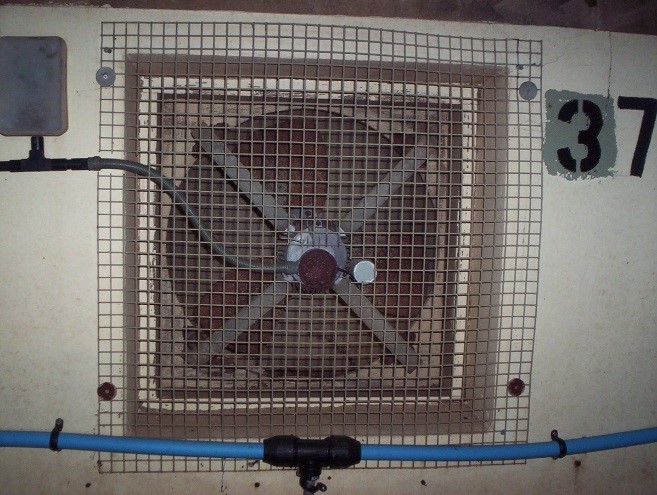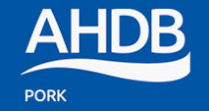Season - Late summer

What To Look For:
Higher tail biting is likely in artificially ventilated buildings in late summer.
Not all units will have a seasonal pattern, but collecting and recording information on the number of tail-bitten pigs per month (or per week) can help to show whether this is a risk on a particular unit.
Be aware of weather and season contributing to tail biting – the increased risk of tail biting in late summer is linked to pens/buildings becoming too hot and humid, for example, where the ventilation settings are not circulating air adequately, or where change in wind direction affects ventilation patterns.
Additional information:
Higher tail biting is likely in artificially ventilated buildings in late summer.
Not all units will have a seasonal pattern, but collecting and recording information on the number of tail-bitten pigs per month (or per week) can help to show whether this is a risk on a particular unit.
Be aware of weather and season contributing to tail biting – the increased risk of tail biting in late summer is linked to pens/buildings becoming too hot and humid, for example, where the ventilation settings are not circulating air adequately, or where change in wind direction affects ventilation patterns.
Suggestions:
Automated system checks:
- Follow specialist ventilation advice for additional air circulation measures in the buildings, e.g. temporary vents, altering roof vents, opening doors/windows etc. – on fully controlled buildings, altering air flow can reduce effectiveness of automatic settings.
- Check ventilation settings to ensure that all pens will receive sufficient air changes in order too reduce build up of humidity and temperature.
- Pay special attention to ventilation systems when cleaning buildings prior to re-stocking to ensure all fans are working at the correct capacity for size of new pigs. for example
- Check and calibrate thermostats regularly to ensure correct information is fed back to the controls.
- If settings can be altered to manage daytime temperatures better, ensure that correct settings are resumed overnight so that pigs do not receive direct cold air over the lying area.
- Check seals inside buildings (e.g. ceiling and wall joins) to reduce air leakage – gaps in the sealswill reduce the efficiency of powered systems (gaps can also create unwanted draughts and downflows which will also disturb the pigs).
Additional measures
- Consider additional measures to assist ventilation, e.g. back-up fans.
- Use compressed air to remove dust build up from vents and fans;
- clear vegetation around air inlets and outlets of the building; clear away any other equipment which may be restricting air intake or outflow.
- If possible, sit or crouch in the pens (at pig height) to see what the conditions are like for the pigs – corridors and spaces above pen height can give a deceptive idea of the temperature, atmosphere and humidity at pig height.
- Consider thinning pigs earlier to reduce pig numbers in the building (which will contribute to high temperature and humidity) – having fewer pigs per pen will allow more pigs to lie on their sides to help cool themselves against the floor.
- Additional measures such as misting or spraying can be useful to reduce temperature, but air movement is vital to reduce humidity build up.
- Ensure correct drainage from under the pens to avoid build up of humidity from effluent in the slurry pit, and correct ventilation of the pit.
- Shade air inlets to reduce intake of warm air;
- Ensuring insulation is well maintained to reduce direct heat into the building;
- Painting the outside of the structure white can reduce heat absorbed by building and keep internal temperature lower (proven in outdoor sow arcs).
- If seasonal tail biting is a known problem on the unit ensure that successful changes are included in management documents and calendar to reduce the impact as much as possible.
Additional material:
Action for productivity 21. Ventilation http://pork.ahdb.org.uk/media/2048/Action-21-Ventilation.pdf
AHDB Pork Ventilation Guide http://pork.ahdb.org.uk/environment-buildings/pig-buildings-housing-development/ventilation/ventilating-pig-buildings-guide/
Action for productivity 3: Heat Stress (Indoor)
http://pork.ahdb.org.uk/media/2044/Action-3-Heat-stress-indoors.pdf
Environmental management for healthy pig production - http://pork.ahdb.org.uk/media/39675/environmental-management-for-healthy-pig-production.pdf
Farm case Study – Seasonality in pigs (whilst these are outdoor sows, the ideas can still be applied to indoor systems) –
http://pork.ahdb.org.uk/media/2037/RIA-10-Seasonality-in-pigs.pdf
